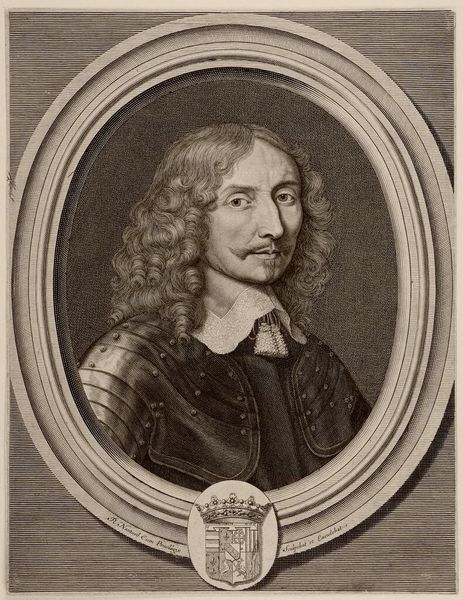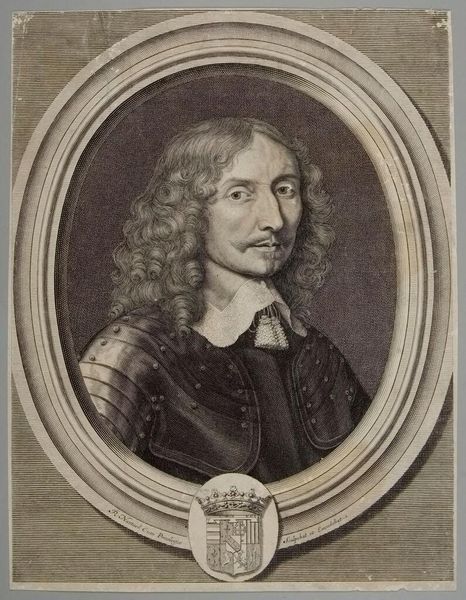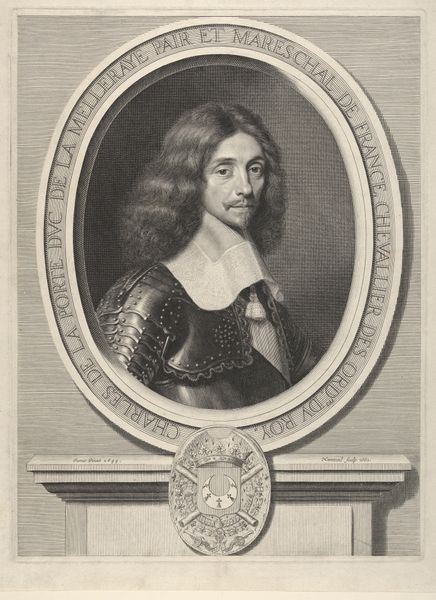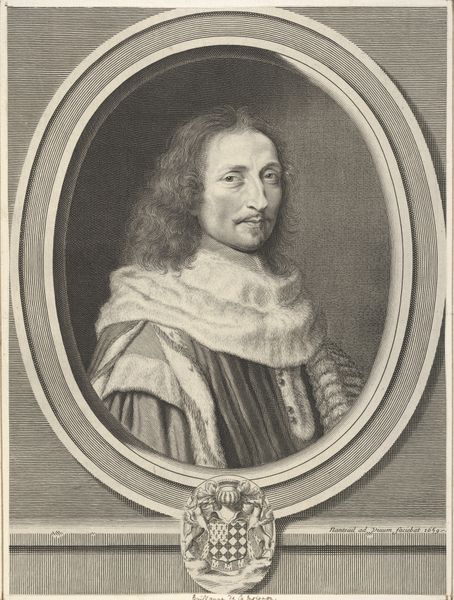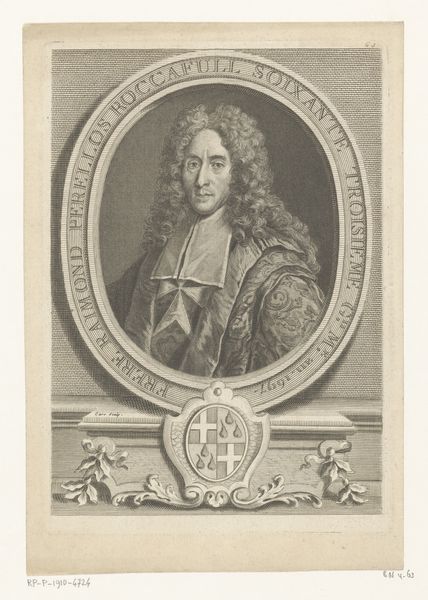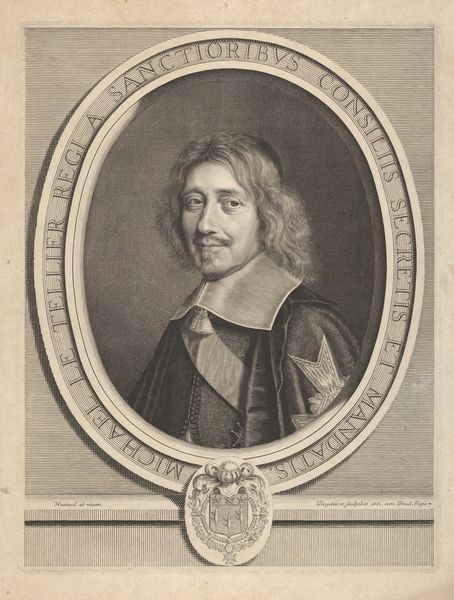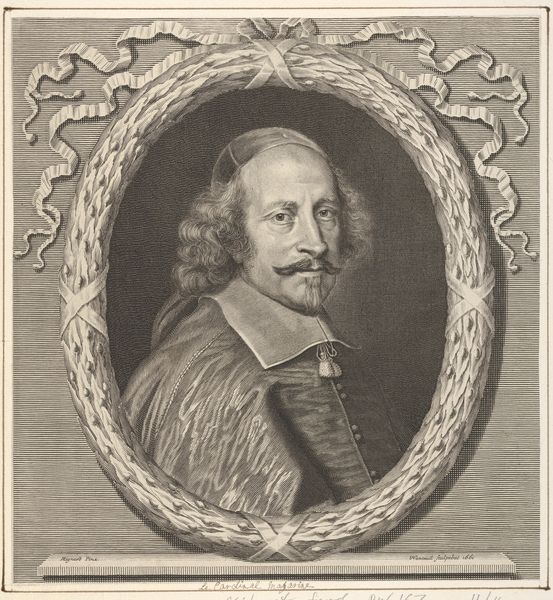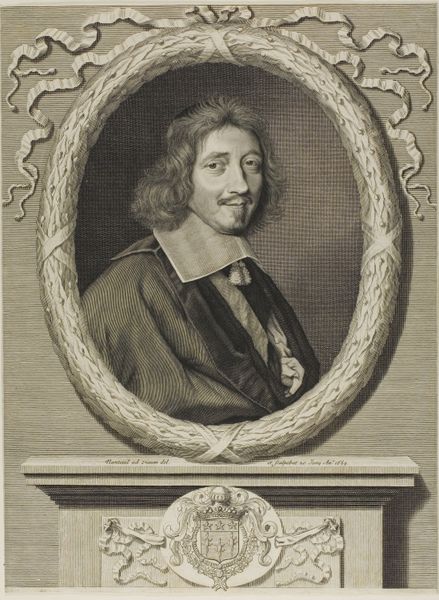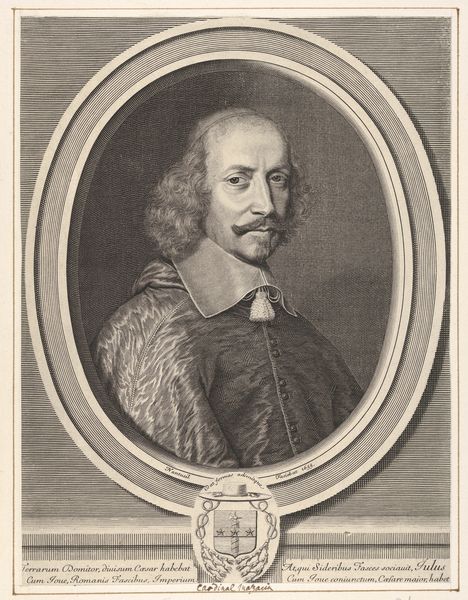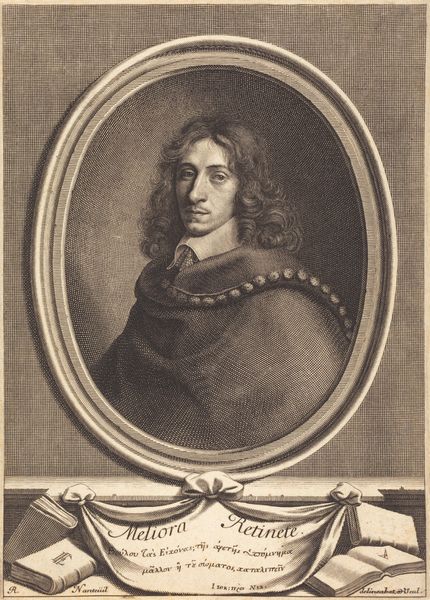
drawing, print, engraving
#
portrait
#
drawing
#
baroque
# print
#
men
#
engraving
Dimensions: Sheet: 13 7/16 × 10 1/2 in. (34.2 × 26.7 cm)
Copyright: Public Domain
Editor: Here we have Robert Nanteuil’s portrait of Henri II de Lorraine, Marquis de Mouy, an engraving from sometime between 1646 and 1656. The Marquis appears serious, adorned in armour, yet framed delicately within an oval. What can you tell us about it? Curator: This portrait gives us a powerful glimpse into the performance of identity during the Baroque era, particularly within the French aristocracy. The armour signifies power, yes, but note how Nanteuil renders it with such meticulous detail using the printmaking process. What does this combination suggest to you? Editor: That there's an attempt to balance the Marquis's imposing status with a more refined and sophisticated self-image? Curator: Precisely. We must also consider the social and political contexts of the time. This was a period of immense upheaval with aristocratic power being both reinforced and questioned. Think of the Fronde uprisings. How might this portrait, commissioned or otherwise, function within that power struggle? The coat of arms may offer a clue to status but it may offer another interpretation related to loyalty and positionality in relation to the throne. Editor: So, this portrait isn't just a depiction, but an assertion of the Marquis's identity and loyalty during a period of great social and political instability. Is this perhaps also about controlling a certain historical narrative? Curator: Exactly. By commissioning such a refined yet commanding portrait, Henri II de Lorraine actively shapes his own narrative for posterity, aligning himself with power, lineage, and a specific vision of aristocratic virtue, relevant even today. Editor: I hadn’t thought of it that way – it's like a carefully constructed PR campaign from centuries ago. Curator: Indeed. And considering who had access to these images and their interpretation helps reveal a network of power relations and the visual rhetoric shaping them. Thank you! This was very insightful!
Comments
No comments
Be the first to comment and join the conversation on the ultimate creative platform.
